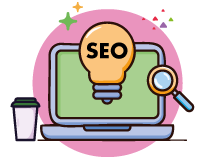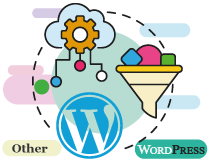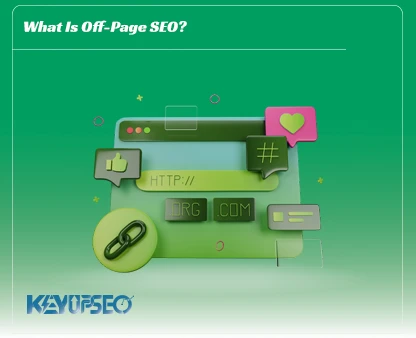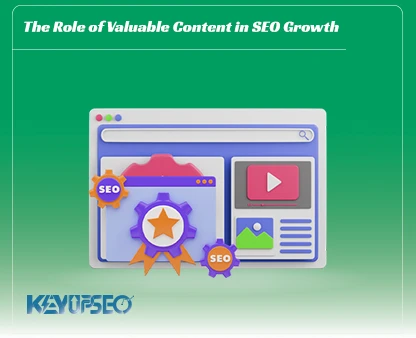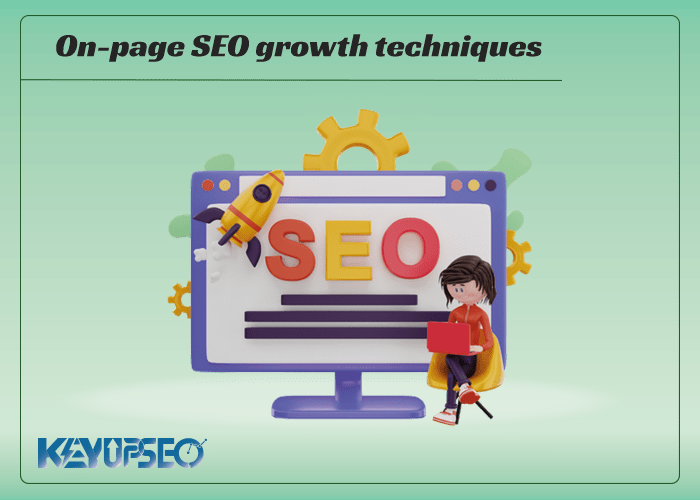
Important tips to strengthen on-page SEO
Read 15 techniques to improve on-page SEO of your website, which will help you become one of the top ranks of Google in this KeyUpSeo article.
Every SEO expert should know the on-page SEO growth techniques, and important tips to strengthen the on-page SEO of the website to Increase SEO Organic traffic.
You have to make it easy for the audience to find your content, and pages in search engines. Therefore, you should follow the standard principles of on-page SEO for each page of the site, and thereby help search engines to give a better rank to your content.
We want to give you a step-by-step guide on how you can take a big step towards better SEO by optimizing the internal content of your website.
What is on-page SEO?
On-page SEO is the main basis of the website SEO. On-page SEO is site optimization for search engines that is done inside your own site.
If your site is optimized with internal SEO principles, search engines will easily find, and read your site, understand its content, and, if it has the necessary standards, recognize it as a useful site for users.
When you are both optimized for Google, and useful for the user, you will get high Google rankings.
SEO of internal pages is not very difficult, you just need to follow a few simple tips, and include them in your content. In the following, we have brought you a list of internal SEO principles, and tips.
Internal SEO techniques of the site
In this section, we have listed internal SEO tips for you so that you can optimize the website internally, and make the most impact on the site's SEO.
-
Optimize the URL of all the pages of your site
The first thing that attracts Google's attention is the address of the site pages. Optimizing the URL of the page leads to better recognition of the page, so it is better to have a short URL, related to the content inside the page, and include keywords.
Avoid complicated URLs, instead have a short URL, and use your keyword.
-
Keyword Research
With keyword research, you can understand what users are looking for in your field of work, what is most important to them, and what words they search for the most! Can you even check if the search trend is increasing or not?
After Keyword Research, you will know the words that are supposed to attract your audience, and increase your site traffic.
Now the key to the SEO world is in your hands! Therefore, according to these words, produce the content of your site or improve them. If you do your keyword research right, you can be confident that you've laid the first brick of internal SEO right, and your wall isn't going to be built as crooked.
Be careful that Keyword Research is not done to attract visitors to the site, but its purpose is to attract those visitors who find the content of your site useful, and who are exactly looking for your content or product.
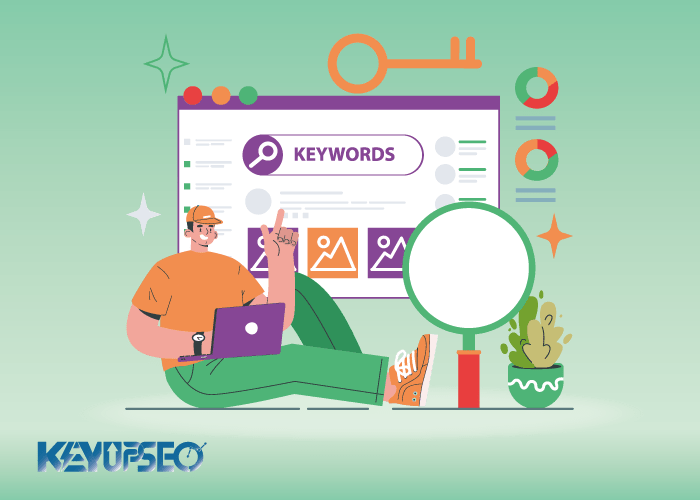
-
Meta title optimization
Meta title is the same phrase that users see in Google results. In the Meta title, you must observe several points to be optimized for the search engine:
- Try not to have more than 60 characters in your SEO title, if it is more than this number, your title will be shown incompletely in Google.
- Use at least one keyword in the SEO title.
- Try as much as possible to put the target keyword at the beginning of the SEO title of the page, and then add details that will encourage the user to click on your link.
-
Use multimedia content in your content
Using images, videos, charts, etc. can reduce your bounce rate, and keep the user on the page longer. These are two of the main metrics in user interaction that have a direct impact on your website's rank.
If you need to quickly reduce the site's bounce rate, you can improve the bounce rate of the website with Buy Website Traffic from KeyUpSeo.
-
Optimize H1, H2, H3 tags
Good content should have the right structure so that the reader does not get confused, and say to himself what this title has to do with the previous title! To comply with the structure, specify the main title of the content that appears above the article with the title of an H1 tag, the main titles with the H2 tag, and their sub-categories with H3, H4, etc.
Most content management systems like WordPress automatically add these tags to the post. However, some templates may manipulate these settings. Check your website code to make sure your headers have the proper tags.
This will guide Google to index your content better, and users will easily read, and understand your content.
And the last SEO tip is that including keywords in the main titles will improve your SEO.
-
Observe the density of keywords
Keywords should be present in all your text in the required number, just remember not to use these words too much to reduce its semantic load, because in Google algorithms such as Semantic Search, and Hummingbird algorithm, this It is considered spam, and will harm your site's SEO.
If you are not familiar with keyword density, it is better to read the article Keyword density calculation guide.
Many SEO experts believe that keyword density should be between 1%, and 3% of the total content of a page. If the number of keywords in your content exceeds this value, Google will identify that page as spam.
-
Put LSI keywords in your post
To avoid repeating the main keywords in your content, you can use LSI. LSI keywords are words with the same meaning as your keyword that Google uses to determine the topic of the page.
-
Produce quality content
The most important part of internal SEO is a good, and quality content. If you follow all the SEO tips completely, but your content is not useful for the user, it has no value for Google either!
Let us explain why this happens:
By following the SEO tips, you will reach the first, and second links of Google; But after a while, Google realizes that every user who clicks on your site, leaves it very quickly, and opens another result! This means that your content could not meet the user's needs, so it lowers your rank, and sends your link to lower results!
So, at the very beginning, try to write your content in such a way that the subject is fully explained, and at the same time the user enjoys reading it.

-
Internal linking is very important
Internal linking on the site is done in two ways:
- Linking to other content or your own products
In every post you make, have two or three links to your other content. This has two advantages for you.
- First, you can get credit for new posts from pages that have more authority.
- Second, if readers click on your links, and go to other pages on your site, it will make them stay longer on your site, and send the message to Google that they like your site! Google, which loves user-friendly sites, gives them credit.
Try not to have irrelevant links. Always consider the benefit of the user, whether this link is useful for the user or not? For example, if you write about internal SEO, a link to off-page content can be useful for the user. But in terms of internal SEO, the link to irrelevant content does not seem logical, and you will also confuse Google.
- Linking to other people's sites
Experience has shown that this is not common among webmasters, and content experts.
Because they think that by linking, the value of the competitor's site will increase; Yes, they think right, but this is a win-win deal. But how?
First, linking to related, and partner sites helps Google to be more easily informed about the activity of your page, and to know in which field of competition to rank you. Also, with this work, Google identifies your site as a reliable source of information that you produce complete content on par with your competitors. So external links are also effective in your SEO.
-
Optimize Anchor Text
Anchor Text means the text of a link that the user clicks on to be directed to the destination page. We help our internal SEO by observing a few points in using Anchor Texts:
- Use keywords in the embeddings.
- Anchor text must be related to the page it is linked to.
- Do not overuse the Exact match anchor text, and try to be diverse in the text of your links.
-
Optimizing and reducing the size of images
Your images must be optimized in two ways:
- They must have an alt tag, and the keyword has been used in them.
The Alt tag helps Google understand what the image is about, and how it relates to the text. Remember that there is less competition in keywords in Google Image, and you can reach better positions in Google image search by optimizing your images.
-
The size of images should be optimal and standard
If the size of the page is large, it will take more time to load the page, and this may cause dissatisfaction, and leave the user. By optimizing the size of the photos, we can improve the loading speed. I recommend that you use the website compressjpeg.com to reduce the size of your site's images without losing quality.
4 on-page SEO techniques that are technical
The following three techniques are part of technical SEO, but since it is done inside your own site, it is also considered as internal SEO, so it is not bad to learn these techniques as well.
-
Optimize the site speed
Google has announced that site speed is one of the ranking criteria. No one likes to spend a lot of time waiting for the pages of a site to open, and load; Especially now that, like any site, there are several, and the user can easily go to other sites.
Therefore, the delay in loading the site can cause the loss of visitors, and reduce the conversion rate. If you don't believe it, it's not bad to know that according to research conducted by Amazon, every 100 milliseconds (0.1 seconds) of delay in loading the site reduces 1% of sales.
According to Google statistics, the time users stay on the page is 70% longer on fast sites (which load in less than 5 seconds) compared to slow sites (which take up to 19 seconds to load). On the other hand, in fast sites, the bounce rate is 35% lower.
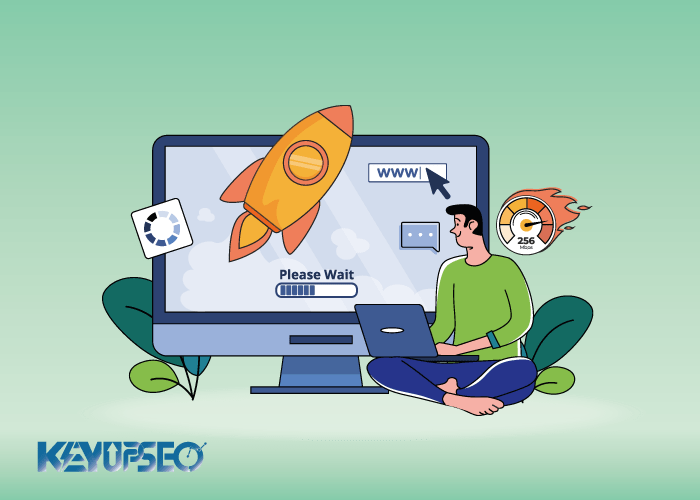
-
Design the site responsively
If you look at the statistics of internet users, you will see that mobile users are many times more than system users. Google realized in 2015 that mobile usage is increasing day by day, and users are visiting sites on mobile devices. Therefore, in 2016, it announced that it would assign better ratings to responsive sites, and strengthen the so-called mobile-friendly signal.
Responsiveness means that when you open the site on other devices such as mobiles, and tablets, its external structure will not be disturbed.
If you want your site to rank higher, you need to use responsive design.
-
Using schema codes
A schema is a set of codes that you put on your site to tell Google what this part of your site is about. By doing this, Google can better place you in the results related to the searched keyword.
Of course, these codes are not one or two, by visiting schema.org you can see all the schema codes, and use them on your site if necessary. Now, you might ask what effect does the use of schema codes have on the site's SEO?
To find the answer to your question, open a new tab in your browser right now, and search the name of a famous character or movie in Google. Now what do you see on the right side of the results page? You will most likely see a series of classified information on the right side of the page.
-
Sitemap.xml
A sitemap is a file that contains a list of the most important pages, and content on the website so that Google's crawlers can easily crawl among the site's links, and index the pages.
In the KeyUpSeo blog, we have fully explained about the Sitemap.xml structure, and discussed its importance, and how to make it.
In general, it can be said that sitemaps are a tool to feed, and introduce the site to search engines.
As a result, having a sitemap is considered an important part of the process of SEO, and optimization of your site, and sitemap construction is done in the technical SEO section of the site.
The importance of on-page SEO in site growth
With SEO, and site optimization, in the competitive market, and in Google results, you can get new customers, and work better than other competitors.
If you want to achieve top results in Google by searching for keywords, you need to do the SEO process in a principled way.
In this article, we tried to explain to you the most important tips for on-page SEO growth, so that you can have a more powerful website step by step, and then move on to off-page SEO so that your pages can reach users, and be seen sooner.
Release date : 23 April, 2024






